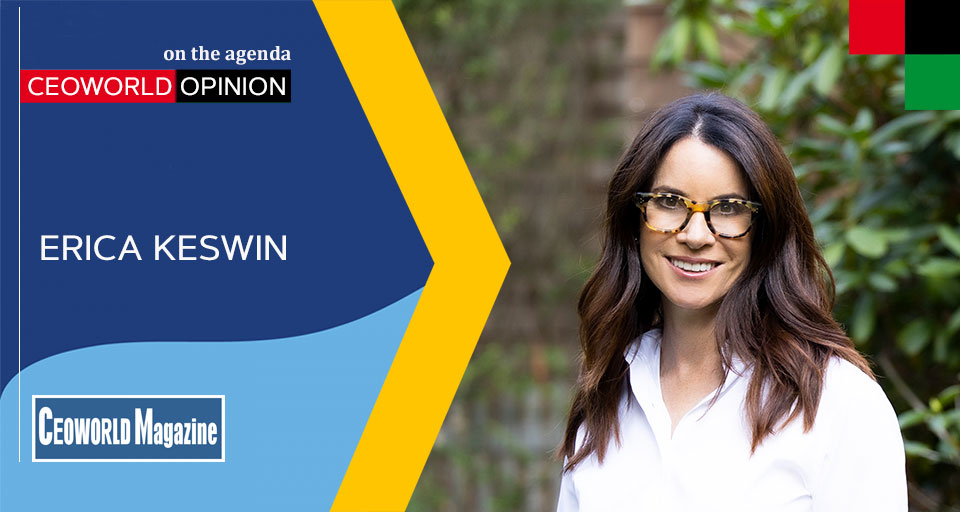Now What? The Key to Employee Engagement (Whether you’re in the Office, at Home or Anywhere in Between).

The revolving door of the COVID reentry is enough to make the most seasoned leaders lose heart. People are overwhelmed, filled with fear and judgment, and quitting their jobs in what’s been called “The Great Resignation.” Let’s face it, the stakes couldn’t be higher: burnout, loss of top talent, a culture vacuum, creativity drain. The pandemic is the biggest, most stressful challenge CEOs and managers have ever faced.
And it’s also your biggest opportunity.
My work with some of the most successful companies in the world—even during the pandemic—has shown me that it’s possible for leaders to not just survive but to thrive even in the most turbulent times. One CEO actually shared with me that his workforce was more engaged than ever. And he’s not alone. Gallup published a report showing that, ironically, engagement was up during the pandemic, but so was stress. They call this the “Wellbeing-Engagement Paradox of 2020.”
Here are three things leaders can do in 2021 (and beyond) to step into this unknown future with confidence and to keep your workforce engaged: create a culture of wellness, communicate often, and rely on rituals.
Create a Culture of Wellness
Have you heard of FOLO? It’s the Fear of Logging Off, and yes, it’s a thing. And it’s at least part of the reason why people are working longer hours during the week and on the weekends. Not surprisingly, burnout numbers are “soaring,” which is unhealthy for employees and businesses. According to an article in the Harvard Business Review, the sad truth is that “the vast majority of us are struggling with general and workplace well-being as the pandemic continues to rage.”
Wellness programs are critical in the best of times, not only keeping your workforce healthy, but creating a culture of care and compassion. In fact, in a 2017 Virgin Pulse survey, 85% of companies that offered wellness programs said they had a high impact on employee engagement, recruitment, retention, and company culture.
Today, wellness is not a “nice to have” but an absolute must. And it’s not enough to offer programs for employees or even to provide incentives for participation. Smart companies are creating wellness for everyone—across the board. Citigroup announced an all-employee holiday – called Citi Reset Day. The first one was so popular that it will return next year.
In July, Bumble, the woman-led dating app, gave all of its employees a full week off given reports of “pandemic-induced burnout.” And Linkedin, which historically gives the whole week of July 4th off, added an extra week off this year in light of the challenges. Teuila Hanson, LinkedIn’s chief people officer, wrote in a Linkedin post after the week off, “It’s been three weeks since we all returned from our company wide RestUp! week and it’s so inspiring to see how our employees returned to work rejuvenated and recharged. It reminds me just how critical company culture and the wellness and mental health of employees are to any business.”
And finally, leaders must in fact lead and model their own wellness. Take vacation, be clear about “disconnection” protocols and follow them themselves. Left to our own devices, too many of us put our own mental health on the back burner. Your employees and your business need you to be well.
Communicate Often, with Transparency, and Honesty.
In the beginning of the pandemic, leaders were communicating and checking in with heart-felt regularity: How are you? How’s your family? Is your technology working? People felt like we were all in this together.
Cut to a year and half later. We’re tired and disgruntled, which is why it’s more important than ever that we keep communicating—often, and with transparency and honesty.
The more leaders can “be real” and speak in a human voice about themselves, their business, and what keeps them up at night, employees will feel like they can do the same. Be honest. Nobody expects you to have all the answers, so don’t pretend you do.
Brian Garish, President of Banfield Pet Hospital, leaned into his IG live during the pandemic and offered a regular Ask Me Anything (AMA) so that he could be accessible to everyone in the organization. Bill Koenigsberg, Founder and CEO of Horizon Media, launched a “Bill Daily” email that went out to all employees that included everything from the state of the business, to what Bill was reading and advice for employees. Not only was this email a big hit, it was more popular than anything he’d ever sent out before. He even heard from some of his employee’s parents who’d been forwarded the email.
Talk about engagement!
Plenty of leaders started communicating in new ways during the pandemic, but too many have dropped the practice. Instead, you should take your communication strategy more seriously than ever, which should include a mix of modes. Not everything has to be a zoom call. Leverage all hands, slack, and even the good old fashioned phone call for a powerful one-on-one.
Whatever it takes, communicate and connect.
Rely on Rituals
Whether your employees are in the office right now, at home, or somewhere in between, rituals are a powerful tool. The simplest of things, done regularly, with intention can help everyone feel more connected to each other, clients, customers and even themselves. The hallmark of a ritual is that it is simple, repeatable and not necessarily practical. In other words, if your team erupts in a spontaneous dance party, that’s not a ritual. But if you keep doing it at the same time every day because you loved it the way it made everyone feel, then it is.
At work, rituals create engagement and wellness through what I call The 3 Ps of Rituals: They give us a sense of Psychological safety and belonging, a connection to Purpose, and taken together—give us increased Performance.
As a leader, look for opportunities for rituals throughout the employee experience—onboarding, meetings, professional development, celebrating milestones. A senior leader at Microsoft recently shared a new ritual that she started during the pandemic when she took on a new job and hired many new people into her group. Each week, a different person on the team shared his or her “origin story.” At first, people were a bit unsure, but now it is a ritual not to be missed. People have learned all kinds of things about each other which leads to unforeseen connections, understanding each other’s journeys and some good laughs. Now that everyone has had a turn, they are figuring out what question they will answer next.
Black Sheep, a marketing agency in Houston, TX stands by their long standing tradition of champagne Friday, no matter where people are working. A small finance company in New York is adding a new ritual to their roster: collaboration day—one day every three weeks everyone comes together in person to connect. The primary purpose of the day is for people to feel connected to each other and the company.
Employee engagement has always been the path and the result of every successful business. Today, we have to look at engagement differently—through the lens of the COVID pandemic and the challenge of trying to plan when everything is unpredictable. For the sake of our wellness, sometimes we actually have to pivot and change the ways we engage.
So when you’re looking at the headlines and asking, Ok…now what…you can refer back to these three things that will guide you and your employees, regardless of where you’re working. By creating a culture of wellness, communicating well, and by relying on rituals, leaders will find the support they and their employees need to navigate whatever the future holds.
Written by Erica Keswin.
Bring the best of the CEOWORLD magazine's global journalism to audiences in the United States and around the world. - Add CEOWORLD magazine to your Google News feed.
Follow CEOWORLD magazine headlines on: Google News, LinkedIn, Twitter, and Facebook.
Copyright 2025 The CEOWORLD magazine. All rights reserved. This material (and any extract from it) must not be copied, redistributed or placed on any website, without CEOWORLD magazine' prior written consent. For media queries, please contact: info@ceoworld.biz









